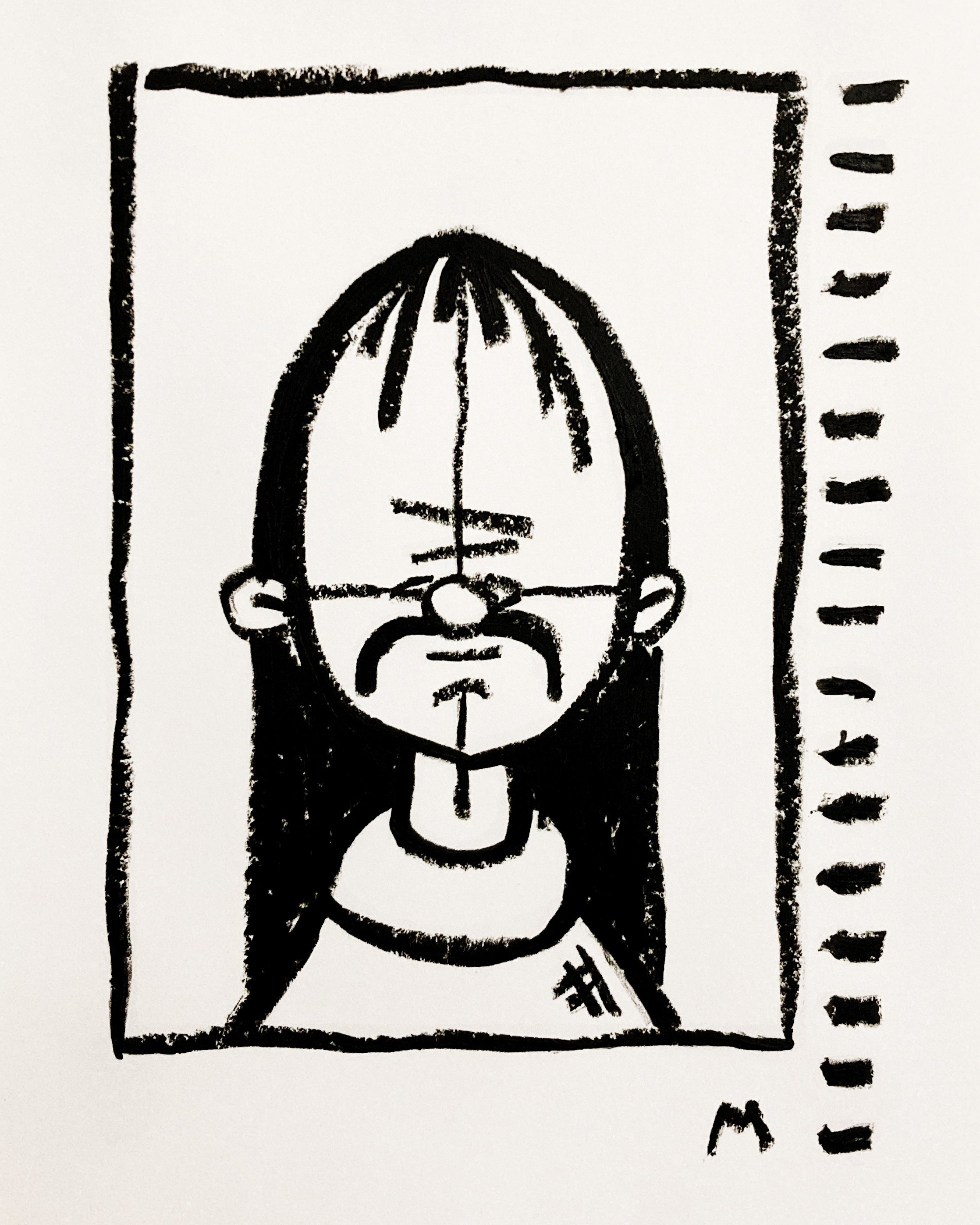I changed my mind - I do like drawing!
One of my previous blog entries made a pretty strong argument why I don’t like drawing and I suspect a lot of artists, especially painters, probably agree with me. I am good at painting but not so good at drawing; I also prefer painting, so am always very keen to crack on with it. However, in order to progress I needed to improve my drawing and certainly become more confident with it.
Detail of original character - oil pastel on paper
Enter the oil pastel! My preferred weapon of choice are Sennelier oil pastels and Daler Rodney oil pastels, although I think the latter have been discontinued but I buy them up, wherever I can find them. Anyway the reason why I enjoy them is because they make bold and confident marks and therefore, so do you!
For me, drawing is about mark making and line, which are key to any other artwork I want to produce. If the drawing works then you are onto a winner, if it doesn’t, then no amount of expensive art materials (and I have a few) will save you.
Drawing by George Condo
For reference, I have found Keith Haring and George Condo very valuable. They use confident lines and on appearance don’t look overly complex but their drawings deliver all the information you need. What have I learned from them? Work and move fast - make a mark and move on!
Detail of original character - oil pastel on paper
The oil pastel is a great tool because it is high contrast and has a lovely texture, so is really enjoyable to use. More importantly it makes bold marks and lines that can’t be erased and has forced me to learn a lot in a short space of time - it has also increased my creative confidence a great deal too! All too often I would overwork pencil drawings and keep rubbing out and going over lines again, which did not look good and rarely would I get marks or lines that really stood out. With the oil pastel, your lines are thick and can’t be moved or erased, so you have to live with it. The material forces you to take risks and not overthink your drawings.
Because you can’t move or erase a line or mark, there is little you can do about a line or mark you don’t like so you don’t and can’t waste time thinking about it or working on it. Instead, you just keep making marks - by producing more work you stumble upon more things that work and can be reproduced in another piece. If I make a mark or line that works and defines a feature i.e. conveys the necessary information I need it to, then I build from that mark in another drawing; over time and with trial, error and experimentation, every line and mark and subsequently all the features of my drawing work well for me and that makes me happy. See finished oil pastel drawings of some of my original characters below.
I even have a nifty way of fixing these drawings but you will have to ask!
Alternatives to oil pastel are pen and ink, brush pens and markers because they also can’t be removed and make bold marks. Or the trusty old pencil, as long as I stick to what I have learned about making a mark or line and moving on, which I am definitely getting better at but also finding I don’t need to as my drawing improves. In short, by forcing myself to draw more, my physical ability has improved a great deal, so fewer mistakes, errors or ugly marks (ineffective marks maybe?) but so has my mindset and approach, which means I am not constantly feeling the need to erase and tinker with my drawings. I really enjoy the drawing process now in its own right, but also as an aid to my other artistic processes. Even better, I have some original drawings to enjoy that have become finished pieces and sketches to refer back to as well.
Drawing by Heesoo Kim
What was key for me? Finding a material I enjoyed using to draw with has certainly been the emphasis here but as ever, drawing in my own way was vital. Yes, Haring and Condo were big influences but elsewhere I love the pencil drawings of Heesoo Kim and spray painted drawings of Hoker One (Steffen Mumm). They were great references because they use lines and marks to give the necessary information, including tone and shade but only subtlety. This resonates with me because I want my drawings to help inform my paintings with far more depth but not to lose the reason why I am drawing, which is primarily to check the structure (lines and marks) of the composition works.
Drawing by Hoker One (Steffen Mumm)
For me, simplicity was key. If line was the important thing then I wanted to make sure I focused my effort and thought on that. Cartoonists often say that exterior lines should be thicker than interior ones and so I tried that and I liked what I saw - I broadly stick to this suggestion. It was also sticking to some rules, which I also think is key because it takes some of the decision making out of the creative process. I do try and adhere to a lot of rules in my drawing and painting, but in my own way and then break or experiment with a few rules to see what happens - sometimes it works and sometimes it does not! My drawing rule is relatively simple: I try and use only two thickness of lines - a thick line or a thin line.
Anyway, I will leave it there for the day and hope you enjoy some of my favourite videos featuring drawing.






